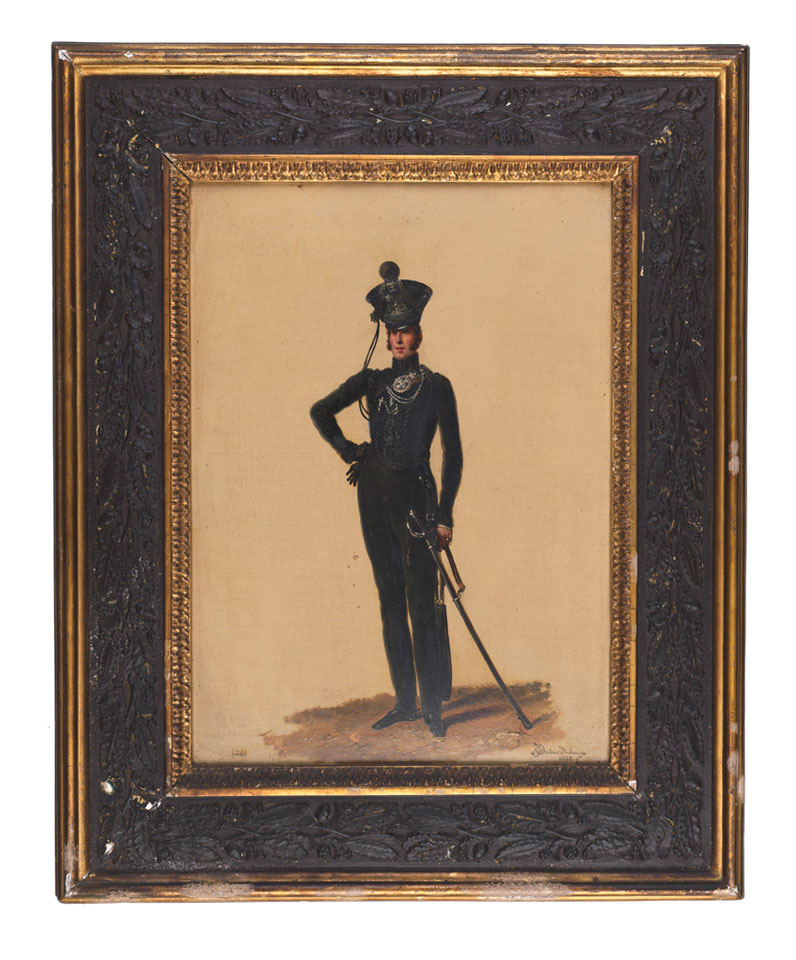
Online Collection
Major Arthur Richard Wellesley, The Marquess of Douro, Rifle Brigade, 1832
Oil on board by Alexandre-Jean Dubois Drahonet, 1832.
In this full-length portrait in uniform, the Marquess of Douro wears a rifle green, single-breasted pelisse with four rows of black olivets or toggles, black cord loops and Astrakhan fur collar and cuffs. The rifle green trousers had black mohair lace running down the outer seam. The shako was of the same pattern as those worn by officers of the line infantry regiments except it had bronze rather than gilt regimental ornaments.
Major Arthur Richard Wellesley was the eldest son of Arthur Wellesley, First Duke of Wellington. He became Marquess of Duoro in 1814. He started his military career in 1823, purchasing a commission as an ensign in the 81st Regiment of Foot. He transferred to the 71st Highland Regiment of Foot in 1825 and then to the Royal Horse Guards as a cornet later that year. He was promoted lieutenant in 1827 and captain in 1828 before transferring again, this time to the King's Royal Rifle Corps. In 1831, the year before this portrait was painted, Duoro was a major in the Rifle Brigade. He was placed on half pay at the rank of lieutenant-colonel in 1834.
A great enthusiast for the Volunteer Movement, from 1853 was Lieutenant-Colonel in the Victoria (Middlesex) Rifle Volunteer Corp and gave a prize of £200 for the best essay on field manoeuvres. He was promoted major-General from 1854 and lieutenant-general from 1854.
The Marquess was also aide-de-camp to his father from 1842 until the First Duke's death in 1852. Like his father, Douro had both a political and military career. He was MP for Aldeburgh from 1829-32 and Norwich from 1837 until he succeeded his father as 2nd Duke of Wellington. He also edited 23 volumes of his father's despatches, correspondence and memoranda for publication.
This portrait is one of a series of 100 portraits by Alexandre-Jean Dubois Drahonet, which were commissioned by King William IV in 1832 to record recent changes in uniform, weapons and equipment. Ninety-one of these are still in the Royal Collection, including a portrait of the future Queen Victoria.
NAM Accession Number
NAM. 2020-01-26-1-1
Copyright/Ownership
National Army Museum, Out of Copyright
Location
National Army Museum, Study collection
Object URL
https://collection.nam.ac.uk/detail.php?acc=2020-01-26-1-1

